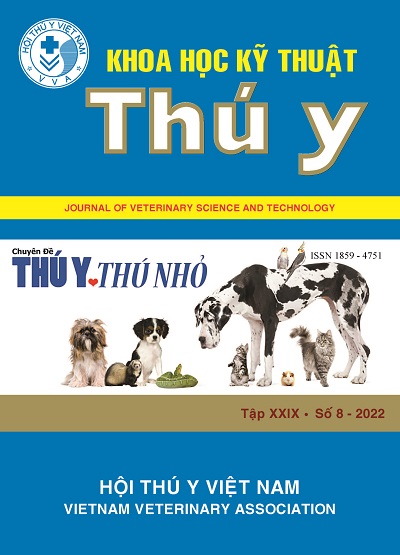Research on the life cycle of the small liver fluke (Opisthorchiidae) in dog, cat in Viet Nam
Abstract
In this study, the life cycle of the small liver fluke (O. viverrini, C. sinensis) was determined with two intermediate hosts: The first intermediate host was freshwater snail (Bithynia siamensis, B.fuchsiana), the second intermediate host was freshwater fish (silver carp -Hypophthalmichthys molitrix, java barb - Barbonymus gonionotus, crusian carp - Carassius auratus, common carp - Cyprinus carpio, grass carp - Ctenopharyngodon idellus). The adult flukes parasitized in liver of dog and cat, layed eggs then
eggs were released into the natural water environment (ponds, rivers, streams, ...). In freshwater, the fluke eggs developed into miracidium larvae after 9-15 days, these larvae always exist inside the eggs. When snails (B. siamensis, B. fuchsiana) swallowed the eggs, inside the snail, miracidium
was released and developed through the stages of sporocyst, redia and cercaria. After 55-62 days cercariae were released from the snail, swimming freely in water and penetrating in freshwater fish. Inside freshwater fish, fluke larvae developed into metacercaria after 25-40 days. When dog, catdefinitive host consumed freshwater fish containing metacercaria, fluke larvae developed to mature
fluke after 26-32 days (O. viverrini) and 28-34 days (C. sinensis).

